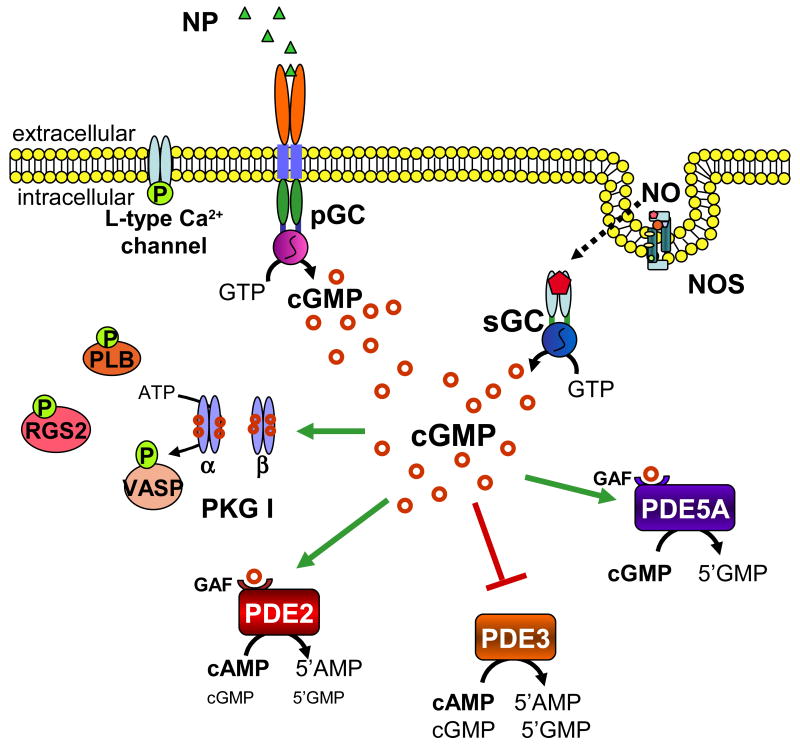Figure 1.
cGMP signaling cascade. cGMP is produced by particulate (pGC) and soluble (sGC) guanylyl cyclases, upon natriuretic peptide and nitric oxide activation, respectively. cGMP can then activate cGMP-dependent protein kinase (PKG) and either activate (green arrow) or inhibit (red arrow bar) various phophodiesterase isoforms. PKG-I phosphorylates several protein targets, including phospholamban (PLB), vasodilatory-stimulated phosphoprotein (VASP), regulator of G protein signaling 2 (RGS2), and the L-type calcium channel. PDE2 and PDE3 catabolize both cAMP and cGMP, whereas PDE5 specifically catabolizes cGMP. Upon cGMP binding to its regulatory GAF domain, PDE2 undergoes a conformational change and increases its enzymatic activity for cAMP. PDE5 similarly increases its catalytic activity for cGMP by an order of magnitude upon cGMP binding to its regulatory GAF domain.

